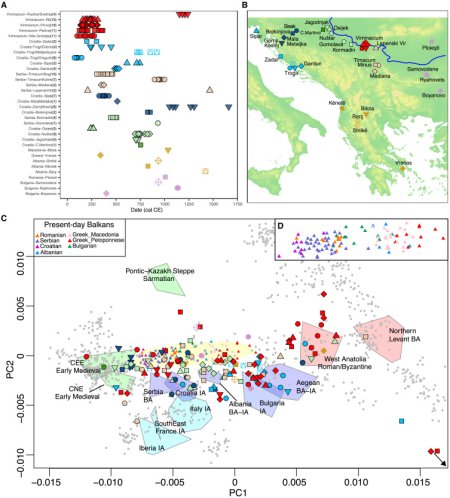Paper out:
Link: https://www.cell.com/cell/fulltext/S0092-8674(23)01135-2
A genetic history of the Balkans from Roman frontier to Slavic migrations
Highlights
• A frontier region of ancient Rome was as cosmopolitan as the imperial center
• Genetic proof that migrants identified as Goths were ethnically diverse confederations
• Slavic-speaking migrants account for 30%–60% of the ancestry of Balkan peoples today
• A model for integrating archaeology with genetics
Summary
The rise and fall of the Roman Empire was a socio-political process with enormous ramifications for human history. The Middle Danube was a crucial frontier and a crossroads for population and cultural movement. Here, we present genome-wide data from 136 Balkan individuals dated to the 1st millennium CE. Despite extensive militarization and cultural influence, we find little ancestry contribution from peoples of Italic descent. However, we trace a large-scale influx of people of Anatolian ancestry during the Imperial period. Between ∼250 and 550 CE, we detect migrants with ancestry from Central/Northern Europe and the Steppe, confirming that “barbarian” migrations were propelled by ethnically diverse confederations. Following the end of Roman control, we detect the large-scale arrival of individuals who were genetically similar to modern Eastern European Slavic-speaking populations, who contributed 30%–60% of the ancestry of Balkan people, representing one of the largest permanent demographic changes anywhere in Europe during the Migration Period.
Link: https://www.cell.com/cell/fulltext/S0092-8674(23)01135-2


